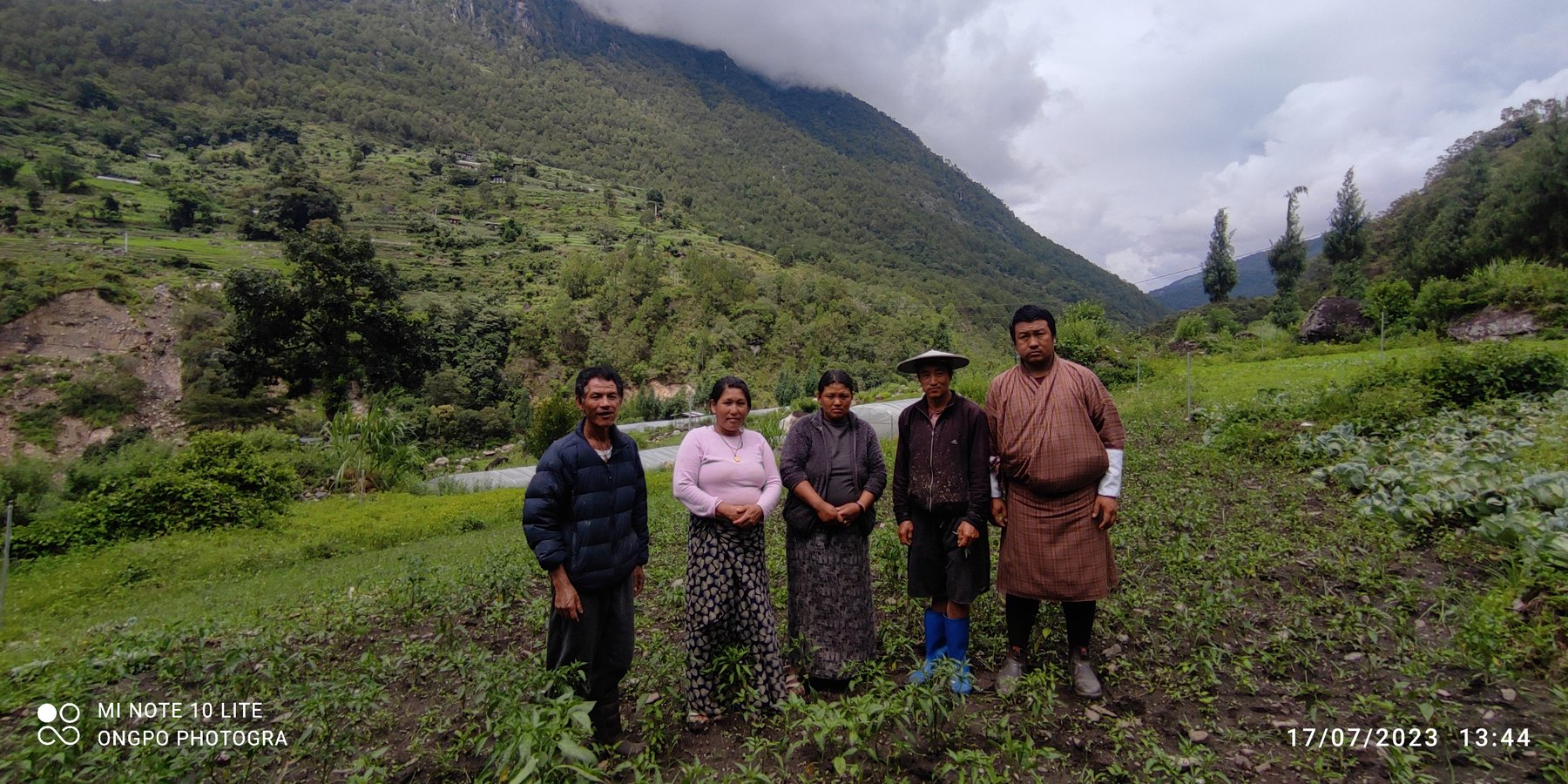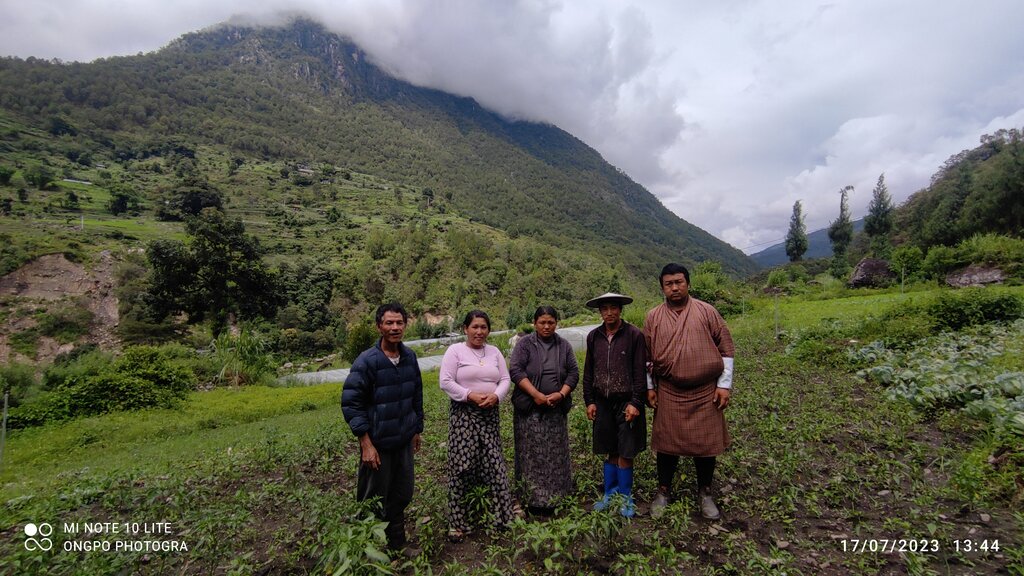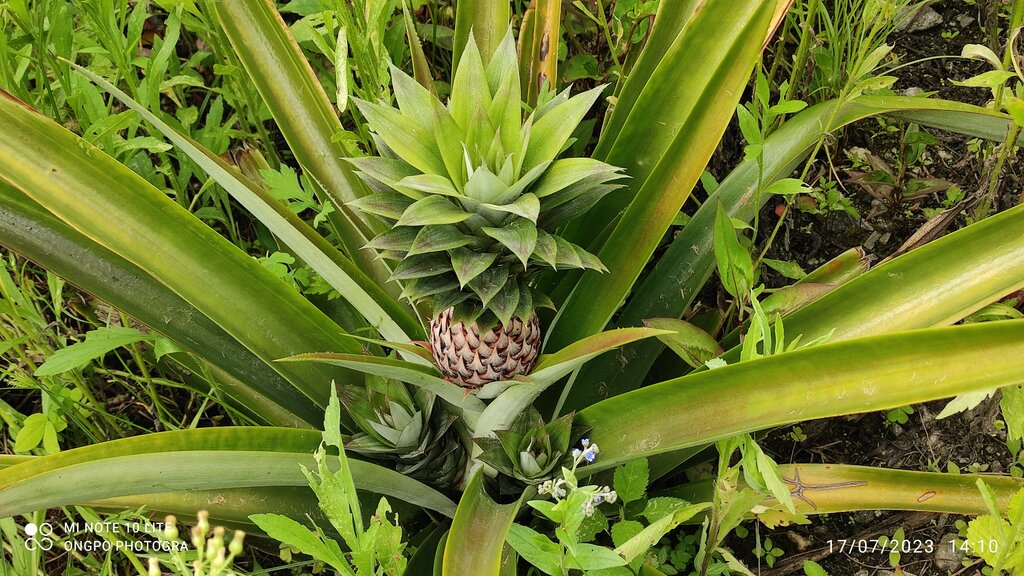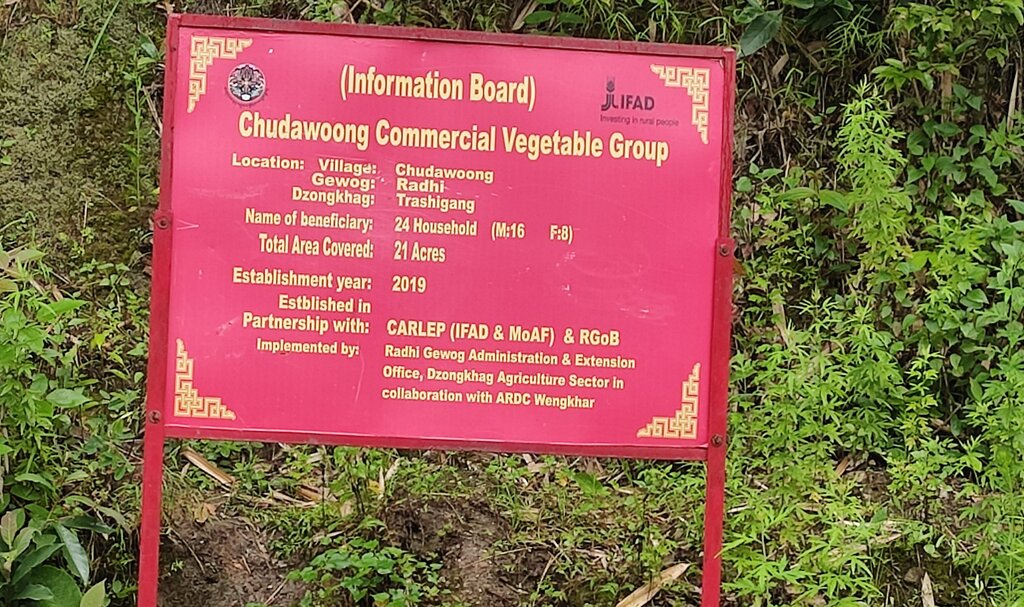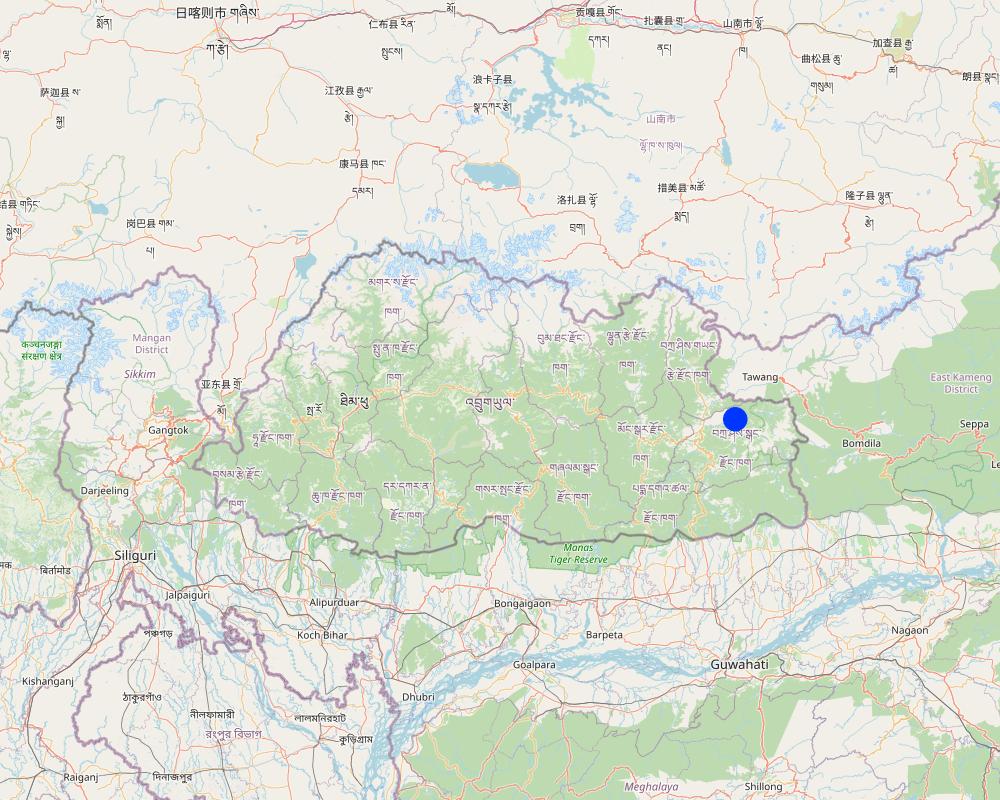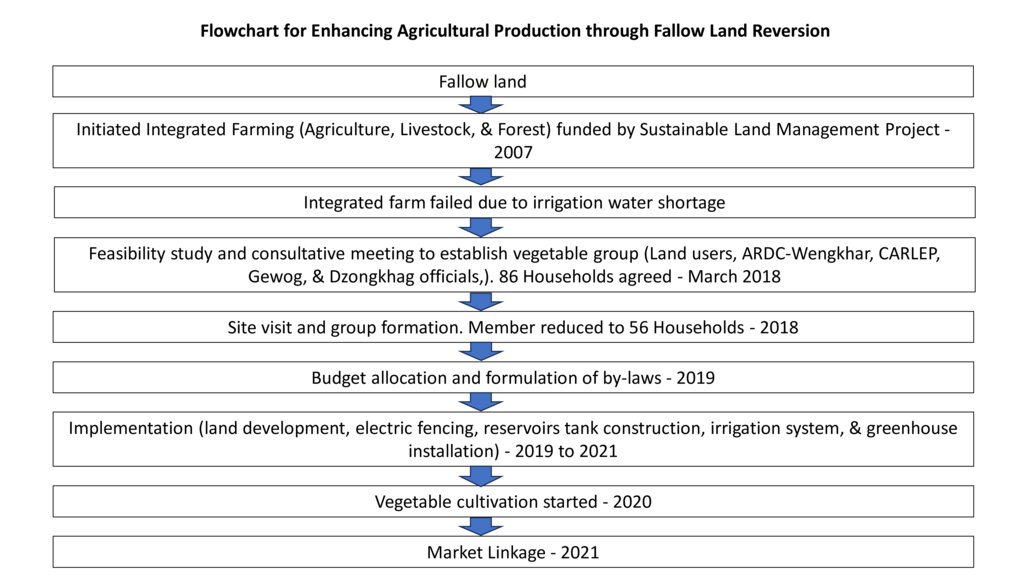Enhancing Agricultural Production Through Fallow Land Reversion [不丹]
- 创建:
- 更新:
- 编制者: Nima Dolma Tamang
- 编辑者: Tashi Wangdi
- 审查者: William Critchley, Rima Mekdaschi Studer, Joana Eichenberger
Zhingtong Zhachoed Baedhi Sanam Thoenshug Yarseng Tangni (ཞིང་སྟོང་ཟ་སྤྱོད་འབད་འདི་སོ་ནམ་ཐོན་ཤུགས་ཡར་སེང་བཏང་ནི།)
approaches_6890 - 不丹
查看章节
全部展开 全部收起1. 一般信息
1.2 参与方法评估和文件编制的资源人员和机构的联系方式
关键资源人员
土地使用者:
Yeshey Kinzang
17675628
Pakaling Chiwog, Radhi Gewog, Trashigang Dzongkhag
不丹
土地使用者:
Jamtsho Ten
17642994
Pakaling Chiwog, Radhi Gewog, Trashigang Dzongkhag
不丹
土地使用者:
Dendup Pema
77874171
Pakaling Chiwog, Radhi Gewog, Trashigang Dzongkhag
不丹
土地使用者:
Pelden Tshering
17558529
Pakaling Chiwog, Radhi Gewog, Trashigang Dzongkhag
不丹
土地使用者:
Zangmo Choni
77753201
Pakaling Chiwog, Radhi Gewog, Trashigang Dzongkhag
不丹
Agriculture Extension Officer:
Wangchen Pema
17436036
pemawangchen2010@gmail.com
Radhi Gewog, Trashigang Dzongkhag
不丹
有助于对方法进行记录/评估的项目名称(如相关)
Strengthening national-level institutional and professional capacities of country Parties towards enhanced UNCCD monitoring and reporting – GEF 7 EA Umbrella II (GEF 7 UNCCD Enabling Activities_Umbrella II)有助于对方法进行记录/评估的机构名称(如相关)
National Soil Services Centre, Department of Agriculture, Ministry of Agriculture & Livestock (NSSC) - 不丹1.3 关于使用通过WOCAT记录的数据的条件
(现场)数据是什么时候汇编的?:
17/07/2023
编制者和关键资源人员接受有关使用通过WOCAT记录数据的条件。:
是
1.4 SLM技术问卷的参考
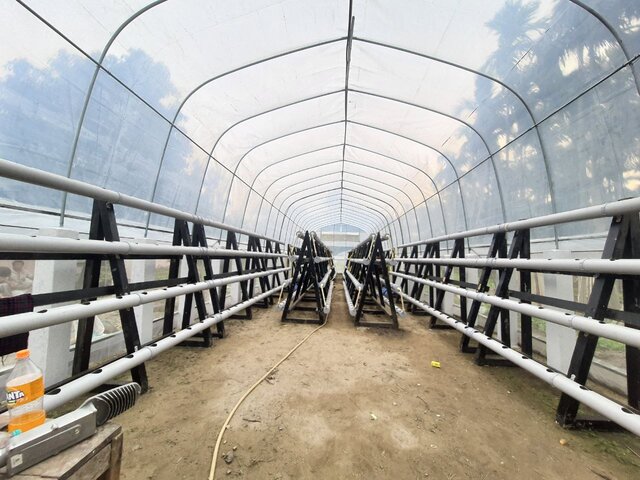
Protected Agriculture for High Value Crops [不丹]
Protected agriculture (controlled environment agriculture) is the use of technology to modify the growing environment for crops to extend the growing period and increase yields. It can include greenhouses, shade nets or polytunnels. This technology is moderately expensive therefore it is used only for the cultivation of high-value crops and …
- 编制者: Nima Dolma Tamang
2. SLM方法的描述
2.1 该方法的简要说明
The approach is to enhance production of local vegetables and fruits through fallow land restoration - under a group established for the purpose.
2.2 该方法的详细说明
该方法的详细说明:
This approach of reverting fallowed land to productivity encompasses leasing land, working in groups, promoting SLM technologies, and forging market linkages. In this example, the land belongs to the community Lhakang (temple) where the community used to grow maize and pulses to be offered to the Lhakang. However, with increased wild animal depredation, and shortages of irrigation water the land was left fallow. In 2019, with support from the government and the Commercial Agriculture and Resilient Livelihoods Enhancement Program (CARLEP), International Fund for Agriculture Development (IFAD) Project, interested farmers from the community came together, leased the land, and started cultivating vegetables. The reverted fallow land is thus cultivated by the Chuthawoong Commercial Vegetable Farming group which is divided into three subgroups – one of women only - to increase efficiency. The group consist of seven and nine men in two male groups and seven women in one female group. There are no youths involved. The initial development involved the implementation of various SLM technologies such as stone bunding and napier grass strips to reduce soil erosion. Developing market linkages is another characteristic of the approach. The Regional Agricultural Marketing and Cooperatives (RAMCO) linked the land users with three schools to sell vegetables. Furthermore, the group signed a contract with Bhutan Agro Industries Limited (BAIL), Lingmithang (state-owned company) to supply dragon fruit and pineapple for processing.
The main aims and objectives of the approach are to become self-sufficient in vegetables and reduce imports, improve the livelihood and income of the land users and retain youth in agriculture through agricultural mechanization. The methods involved in implementing the approach were consultation among the community leaders and land users, and higher-level consultation with the Gewog Leaders and Dzongkhag Officials, consultation with the Agriculture Research and Development Center (ARDC) Wengkhar and with CARLEP project members.
Stages of implementation included conducting a feasibility study, followed by consultation meetings with the land users. Land development was carried out along with the installation of facilities including fencing, greenhouses, irrigation, and irrigation water storage tanks. After that, the group was formed and bylaws established. Seeds and seedlings were provided by the government.
Stakeholders involved include Gewog officials to develop land lease agreements. The Gewog Extension officer was involved throughout the process in providing guidance and support concerning irrigation, land development, vegetable and fruit cultivation and others. Dzongkhag officials were involved in the feasibility study and planning, and as one of the funding source. CARLEP act as the biggest funding agency to facilitate infrastructure support along with carrying out monitoring activities. ARDC-Wengkhar provided technical support and RAMCO established market linkages.
Land users benefit from increased household income and being self-sufficient in vegetables. The major challenges faced by the land users are distance, as the land is located far away from their houses, and marketing issues, as total production remains above market demand.
2.3 该方法的照片
2.5 采用该方法的国家/地区/地点
国家:
不丹
区域/州/省:
Trashigang Dzongkhag
有关地点的进一步说明:
Pakaling Chiwog, Radhi Gewog,
Map
×2.6 该方法的开始和终止日期
注明开始年份:
2017
2.7 方法的类型
- 最近的本地倡议/创新
2.8 该方法的主要目的/目标
The main aim of the approach is to reduce imports by increasing vegetable production, Improve the livelihood and living standard of the land users and retain youth in agriculture through agriculture mechanization.
2.9 推动或妨碍实施本办法所适用的技术的条件
财务资源和服务的可用性/可得性
- 启动
The approach received financial support from various organizations. Dzongkhag Administration (Royal Government of Bhutan) provided Nu. 500,000/-, followed by Nu. 850,000/- from CARLEP-IFAD project and Nu. 90,000 from BAIL.
机构设置
- 启动
There is a very good collaboration between the institutions such as Schools and with the BAIL.
参与者的的协作/协调
- 启动
Although financial support was provided, the community came together to contribute labour for 300 days per household. The farm is Local Organic Assurance System (LOAS) certified and there is a common understanding to follow the organic guidelines.
法律框架(土地使用权、土地和水使用权)
- 启动
The land belongs to the community Lhakang of Pakaling Chiwog. Out of 100 households, only 27 households were interested and engaged in renting the land for crop production. The Local government had facilitated and the lease agreement was drawn between the Lhakhang and community. The land users have to pay a sum of Nu.7500/- to the Lhakang. The group members can cultivate the land for all time while non group members have no right to object or raise any issues. In case, If the group disintegrates in future, any outsider or member of the community can take up the farming activity with no objections from the others.
了解SLM,获得技术支持
- 启动
The land users had access to technical support Gewog Extension Officer, the Dzongkhag Agriculture officer and Researchers from the ARDC-Wengkhar.
市场(购买投入,销售产品)和价格
- 启动
The groups have a linkage to supply vegetables to the schools and signed the contract with the BAIL, Lingmithang
工作量、人力资源可用性
- 阻碍
The land users are engaged in rice cultivation in their own fields and weaving. Therefore, the availability of manpower in the revived land is minimal.
3. 相关利益相关者的参与和角色
3.1 该方法涉及的利益相关者及其职责
- 当地土地使用者/当地社区
Land users
Contributed labour during the establishment of the farm and involved in the cultivation of the vegetables. They are the main actors in the approach.
- SLM专家/农业顾问
Gewog Extension officer, Dzongkhag Agriculture officer, Researchers from ARDC-Wengkhar.
Provides technical support such as training in vegetable cultivation, and setting up irrigation systems.
- 教师/学龄儿童/学生
Teachers engaged in School Feeding Programme
Purchase farm produce from the group.
- 私营部门
BAIL
Provides fund support and purchase farm produce for processing
- 地方政府
Gup, Tshokpa
Involved in developing the land lease agreement.
- 国家政府(规划者、决策者)
Royal Government of Bhutan
Conduct a feasibility study, and provide financial support.
- 国际组织
CARLEP-IFAD
Provide fund sources for the establishment of the farm and conduct monitoring.
3.2 当地土地使用者/当地社区参与该方法的不同阶段
| 当地土地使用者/当地社区的参与 | 指定参与人员并描述活动 | |
|---|---|---|
| 启动/动机 | 自我动员 | The land was fallow for 27 years and in 2007 the land users tried to restore the land by initiating Integrated Agriculture Farm where they cultivated forest trees, crops and livestock. However, with the unavailability of water, the integrated farm was not successful. People informed the government about the need for a water pump and the Gewog Gup shared it in a higher meeting. This was the initiation of the Land restoration approach. |
| 计划 | 互动 | There were numerous meetings involving the land users, Gewog officials, Gewog Extension Officer, Dzongkhag officials, officials from ARDC-Wengkher and CARLEP. |
| 实施 | 互动 | Land users and all the stakeholders were involved in the implementation of the approach. |
| 监测/评估 | 互动 | External monitoring is done by Audit officers from the stakeholders involved, Audit officers from Bumthang for CARLEP, and Audit officers from Samdrup Jongkhar for RGoB. Internal monitoring is done by the Treasurer of the group. |
3.3 流程图(如可用)
具体说明:
The flowchart has been developed in consultation with the land users and Gewog Agriculture Extension Officer.
作者:
Nima Dolma Tamang
3.4 有关SLM技术选择的决策
具体说明谁有权决定选择要实施的技术:
- 所有相关参与者,作为参与式方法的一部分
解释:
All relevant actors were involved in the selection of the technology. Gewog Extension Officer, Dzongkhag Officials, and Researchers from ARDC-Wengkhar provided technical inputs and the land users provided valuable area-specific knowledge based on their experience.
明确做出决策的依据:
- 对充分记录的SLM知识进行评估(基于证据的决策)
- 个人经验和意见(无记录)
4. 技术支持、能力建设和知识管理
4.1 能力建设/培训
是否为土地使用者/其他利益相关者提供培训?:
是
明确受训人员:
- 土地使用者
如果相关,请说明性别、年龄、地位、种族等。:
The training was provided to 7 women and 16 men.
培训形式:
- 示范区域
- 公开会议
涵盖的主题:
Soil nutrient management, vegetable production technique, compost making and others.
4.2 咨询服务
土地使用者有权使用咨询服务吗?:
是
指明是否提供了咨询服务:
- 在土地使用者的土地上
- 在固定中心
- On social media (WeChat)
说明/注释:
Advisory service in the form of hands on training at site, at gewog centers and online social media forums such as WeChat.
4.3 机构强化(组织发展)
是否通过这种方法建立或加强了机构?:
- 是,适度
具体说明机构的强化或建立程度:
- 本地
- 区域
说明机构、角色和职责、成员等。:
The role of the group is to meet their objectives through vegetable production and motivate one another.
具体说明支持类型:
- 财务
- 能力建设/培训
- 设备
提供进一步细节:
The land users benefit from the approach as the income generated is useful in sustaining their livelihoods. Land users' capacity was built as they were engaged in the training and implementation of various SLM technologies. The group received equipment such as an irrigation system, electric fencing, greenhouse and others.
4.4 监测和评估
监测和评估是该方法的一部分吗?:
是
注释:
The monitoring and evaluation are done by the donors to evaluate the success of the approach. The monitoring includes site visits and verifying the documents on the purchase and sale of the inputs of the produce and its economic benefits to the land users.
若是,该文件是否用于监测和评估?:
否
4.5 研究
研究是该方法的一部分吗?
否
5. 融资和外部物质支持
5.1 该方法中SLM组成部分的年度预算
如果不知道准确的年度预算,请给出一个范围:
- 100,000-1,000,000
注释(例如主要的资助来源/主要捐助者):
CARLEP project and Royal Government of Bhutan
5.2 为土地使用者提供财政/物质支援
土地使用者是否获得实施该技术的财政/物质支持?:
是
如果是,请具体说明支持的类型、条件和提供者:
Following are the financial support received by the group. 16 numbers of fabricated greenhouses where the land user paid 20% of the amount and 80% was funded by the donor. 100% funding was provided by the donor for the water pump, electric fencing, internal networking of irrigation, cement, grass-cutting machine, seeds and seedlings, water tank and curing shed construction. Labour input was contributed by the land users. The total of Nu. 90,00,000/- (Ninety hundred thousand) was supported for the project.
5.3 对特定投入的补贴(包括劳动力)
- 设备
| 具体说明哪些投入得到了补贴 | 程度如何 | 对补贴做出具体说明 |
|---|---|---|
| Water pump, grass cutting machine | 充分融资 | Water pump and grass cutting machine 100% funded by the doner. |
- 农业
| 具体说明哪些投入得到了补贴 | 程度如何 | 对补贴做出具体说明 |
|---|---|---|
| 种子 | 充分融资 | By RGoB. |
| Land development | 充分融资 | 100% machine contribution was done by the government with labour contribution from land users. |
- 建筑
| 具体说明哪些投入得到了补贴 | 程度如何 | 对补贴做出具体说明 |
|---|---|---|
| 道路 | 充分融资 | By government. |
| Greenhouse, electric fencing, internal networking irrigation system, curing shed | 部分融资 | For greenhouses, 80% was funded by the doner, 20% by land users. For electric fencing, internal networking irrigation system, cement, pipes, curing shed and water storage tank materials were funded 100% by the doner with labour contribution made by land users |
- 基建
| 具体说明哪些投入得到了补贴 | 程度如何 | 对补贴做出具体说明 |
|---|
如果土地使用者的劳动力是一项重要的投入,那么是不是:
- 自愿
注释:
Labour and locally available materials were contributed by the land users.
5.4 信用
是否根据SLM活动的方法给予信用值?:
否
5.5 其它激励或手段
是否有其他激励措施或工具用于促进SLM技术的实施?:
否
6. 影响分析和结论性陈述
6.1 方法的影响
该方法是否有助于当地土地使用者,提高利益相关者的参与度?:
- 否
- 是,很少
- 是,中等
- 是,支持力度很大
The approach improved farm income and their livelihood. It improved stakeholders participation such as schools, Extension officials, and BAIL.
这种方法是否有助于基于证据的决策?:
- 否
- 是,很少
- 是,中等
- 是,支持力度很大
The approach enabled land users and the stakeholders involved to make decisions based on the findings. For example, the land users learned that potato cultivation was not profitable due to insect infestation, so they opted for chili cultivation in the next season.
该方法是否帮助土地使用者实施和维护SLM技术?:
- 否
- 是,很少
- 是,中等
- 是,支持力度很大
Land users implemented stone bunding and napier grass plantation to reduce soil erosion which they have maintained very well as it was very efficient in controlling soil erosion. The Napier grass was also sold creating income opportunities.
该方法是否提高了土地使用者实施土地管理的知识和能力?:
- 否
- 是,很少
- 是,中等
- 是,支持力度很大
The land users were involved in the SLM technologies establishment under the supervision of the SLM specialist leading to improved knowledge.
该方法是否提高了其他利益相关者的知识和能力?:
- 否
- 是,很少
- 是,中等
- 是,支持力度很大
The stakeholders' knowledge was improved greatly as the challenges faced by the land users were forwarded to the stakeholders (SLM specialist/RAMCO). The stakeholders were to address the challenge and in the process, the stakeholder had to develop new techniques and test them on the field which led to improved knowledge of both the parties.
该方法是否建立/加强了机构、利益相关者之间的合作?:
- 否
- 是,很少
- 是,中等
- 是,支持力度很大
All the stakeholders and land users worked together to achieve a common goal i.e. increased income for land users and use of fallow land for agriculture production, reduce import.
该方法是否有助于社会和经济弱势群体?:
- 否
- 是,很少
- 是,中等
- 是,支持力度很大
If the land users are interested, irrespective of their wealth and status, all the land users in the community are allowed to participate in the approach. Therefore, economically disadvantaged groups involved in farming activity have improved livelihood and increased household income.
该方法是否改善了性别平等并赋予女性权力?:
- 否
- 是,很少
- 是,中等
- 是,支持力度很大
The approach has two subgroups with heterogenous members (male and female) and one subgroup has only female members encouraging women's participation in decision-making.
该方法是否鼓励年轻人/下一代土地使用者参与SLM?:
- 否
- 是,很少
- 是,中等
- 是,支持力度很大
The approach was initiated to encourage youths to participate in agricultural activities. However, there is no interest shown by the youths. This could be due to low-income generation, poor market access and less or no recreation facility in the approach site.
该方法是否改善了粮食安全/改善了营养?:
- 否
- 是,很少
- 是,中等
- 是,支持力度很大
The approach enabled land users to be self-sufficient in vegetables during winter and also generate income by selling the produce. Thus, making the community self-sufficient in vegetables and certain fruits.
该方法是否改善了市场准入?:
- 否
- 是,很少
- 是,中等
- 是,支持力度很大
The approach linked the land users to the market such as schools and processing units (BAIL).
该方法是否会带来就业、收入机会?:
- 否
- 是,很少
- 是,中等
- 是,支持力度很大
The approach improved the income of the land users as they were able to buy school necessities for their children from the income generated by selling vegetables from the approach site.
6.2 土地使用者实施SLM的主要动机
- 增加生产
The additional cultivation in the area improved food self-sufficiency and food security. Therefore, increased production due to improved soil quality is one of the main motivating factors to adopt SLM.
- 增加利润(能力),提高成本效益比
The farmers do not have a significant contribution to the establishment of the SLM, major activities were funded by the government. So all the benefits obtained are profits for the land users. Therefore, this is another important motivation for the adoption of the approach.
6.3 方法活动的可持续性
土地使用者能否维持通过该方法实施的措施(无外部支持的情况下)?:
- 是
若是,请说明如何维持:
The approach is sustainable. Even though the market for large quantities of produce is not available. There is a market linkage created with local consumers. Further, the land users can link with the relevant stakeholders to export the produce. Moreover, the land users were well trained in vegetable production to sustain without external support.
6.4 该方法的长处/优点
| 土地使用者眼中的长处/优势/机会 |
|---|
| Improved production and increased cultivable land is major strength of the approach. With the fallow land reversion and sufficient irrigation water, the land is is able to produce large amount of crop. |
| The approach contributed to improved household income. By selling the crops grown in the revived area, the land users get additional income to support their livelihood. |
| 编制者或其他关键资源人员认为的长处/优势/机会 |
|---|
| Improved nutrition to the school children as the quality of organic vegetables supplied by the group is better than the imported produce grown in a conventional system with the use of pesticides especially from India. |
| Reduces import as the group sell their produce to the schools and nearby community. The demand for vegetable is met by domestic production, therefore there are fewer commodities imported. |
6.5 该方法的弱点/缺点以及克服它们的方法
| 土地使用者认为的弱点/缺点/风险 | 如何克服它们? |
|---|---|
| The land is far from the houses of the land users making it difficult for the land users to give constant management and care. | |
| Radhi is known as the "Rice bowl of eastern Bhutan" and it is also famous for the Bhuray (type of fabric) gho and kira (National dress). Therefore the reverted land is neglected during peak rice production season and labour demanded by the weaving of the Buray gho and kira high. | |
| Due to less market and surplus production. Land users are challenged with marketing of their crops. | Encourage middlemen to purchase their produce and sell it to other parts of the country. |
7. 参考和链接
7.1 方法/信息来源
- 实地考察、实地调查
There were six informants, five land users and one Gewog Extension Officer.
- 与土地使用者的访谈
five land users
- 与SLM专业人员/专家的访谈
One, gewog extension officer
7.2 参考可用出版物
标题、作者、年份、ISBN:
Lhamo C. (2021). Agricultural production through fallow land reversion with numerous interventions. CARLEP. Retrieved from https://carlep.gov.bt/agricultural-production-through-fallow-land-reversion-with-numerous-interventions/
可以从哪里获得?成本如何?
https://carlep.gov.bt/agricultural-production-through-fallow-land-reversion-with-numerous-interventions/
链接和模块
全部展开 全部收起链接

Protected Agriculture for High Value Crops [不丹]
Protected agriculture (controlled environment agriculture) is the use of technology to modify the growing environment for crops to extend the growing period and increase yields. It can include greenhouses, shade nets or polytunnels. This technology is moderately expensive therefore it is used only for the cultivation of high-value crops and …
- 编制者: Nima Dolma Tamang
模块
无模块


